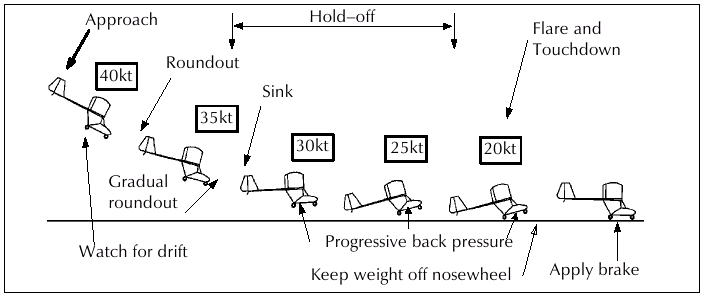SixPapaCharlie
May the force be with you
- Joined
- Aug 8, 2013
- Messages
- 16,062
- Display Name
Display name:
Sixer
I flew a 172 today for the first time in maybe ~2 years.
As a student, it was "When do I flare?" "where do I flare?" "How High do I flare?" "Is it before or after the round out?"
"Look at Brian. He has 27 pieces of flair and a great smile."
Ok so I have been flying the Cirrus and I don't execute any discernible "flare". I watch my speeds and with pretty good accuracy, can set it where I want it but it is pretty flat and there is no exciting maneuver at the end.
I took off today in the Cessna and in the back of my mind, I kept thinking "I know I have to land this thing and it is going to be a flare maneuver of some sort at the end if I want to live."
I reviewed my notes on the plane and hit my speeds and landed it like I land the Cirrus. Nothing special, and had a handful of really smooth landings where I wanted them.
As students, we stressed out about the flare but what is it exactly and why is it emphasized? Hit your speeds, manage your energy, and you can put the plane where you want w/o some specialized feature at the end.
Thoughts?
As a student, it was "When do I flare?" "where do I flare?" "How High do I flare?" "Is it before or after the round out?"
"Look at Brian. He has 27 pieces of flair and a great smile."
Ok so I have been flying the Cirrus and I don't execute any discernible "flare". I watch my speeds and with pretty good accuracy, can set it where I want it but it is pretty flat and there is no exciting maneuver at the end.
I took off today in the Cessna and in the back of my mind, I kept thinking "I know I have to land this thing and it is going to be a flare maneuver of some sort at the end if I want to live."
I reviewed my notes on the plane and hit my speeds and landed it like I land the Cirrus. Nothing special, and had a handful of really smooth landings where I wanted them.
As students, we stressed out about the flare but what is it exactly and why is it emphasized? Hit your speeds, manage your energy, and you can put the plane where you want w/o some specialized feature at the end.
Thoughts?




